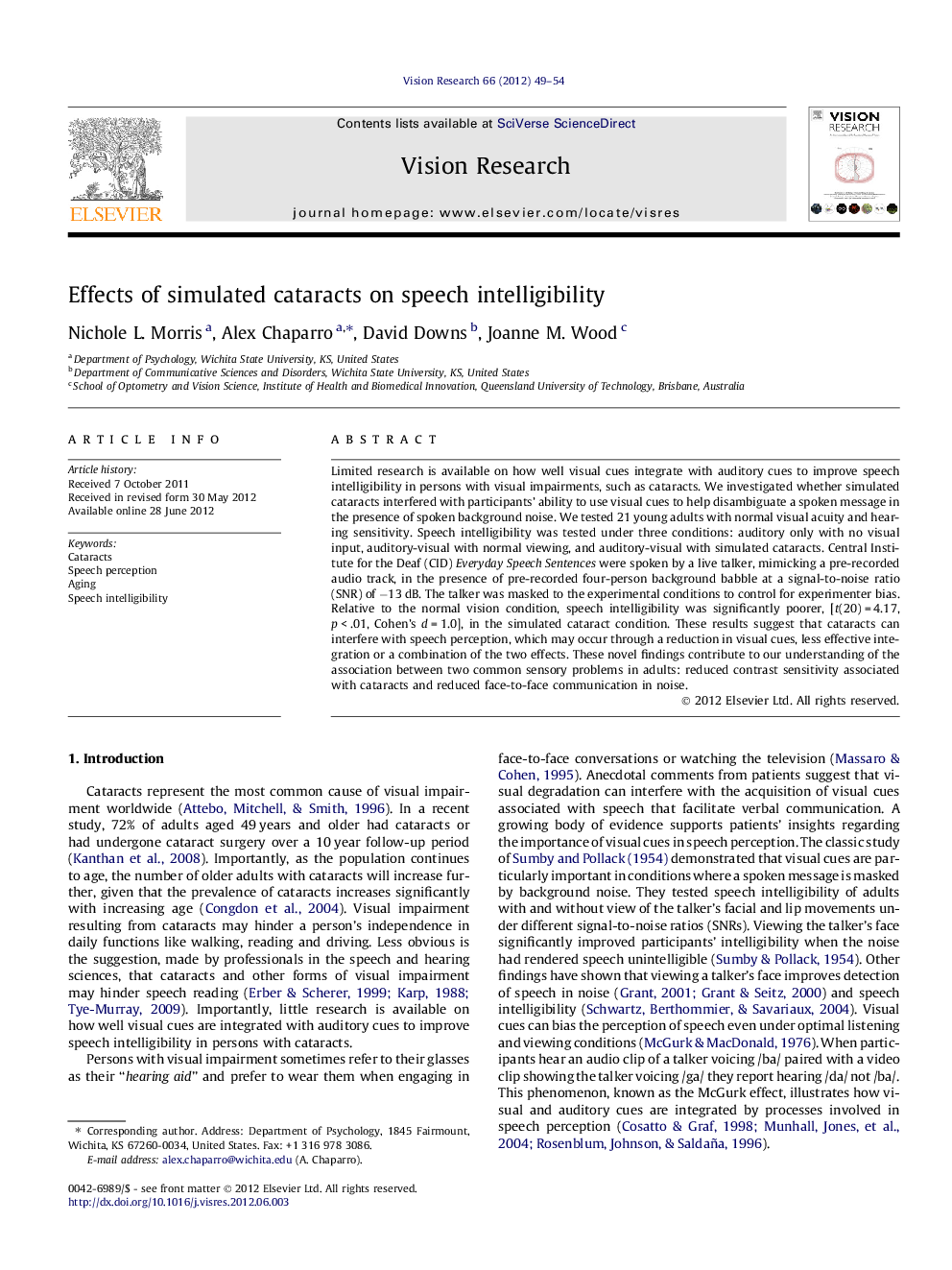| Article ID | Journal | Published Year | Pages | File Type |
|---|---|---|---|---|
| 4033986 | Vision Research | 2012 | 6 Pages |
Limited research is available on how well visual cues integrate with auditory cues to improve speech intelligibility in persons with visual impairments, such as cataracts. We investigated whether simulated cataracts interfered with participants’ ability to use visual cues to help disambiguate a spoken message in the presence of spoken background noise. We tested 21 young adults with normal visual acuity and hearing sensitivity. Speech intelligibility was tested under three conditions: auditory only with no visual input, auditory-visual with normal viewing, and auditory-visual with simulated cataracts. Central Institute for the Deaf (CID) Everyday Speech Sentences were spoken by a live talker, mimicking a pre-recorded audio track, in the presence of pre-recorded four-person background babble at a signal-to-noise ratio (SNR) of −13 dB. The talker was masked to the experimental conditions to control for experimenter bias. Relative to the normal vision condition, speech intelligibility was significantly poorer, [t(20) = 4.17, p < .01, Cohen’s d = 1.0], in the simulated cataract condition. These results suggest that cataracts can interfere with speech perception, which may occur through a reduction in visual cues, less effective integration or a combination of the two effects. These novel findings contribute to our understanding of the association between two common sensory problems in adults: reduced contrast sensitivity associated with cataracts and reduced face-to-face communication in noise.
